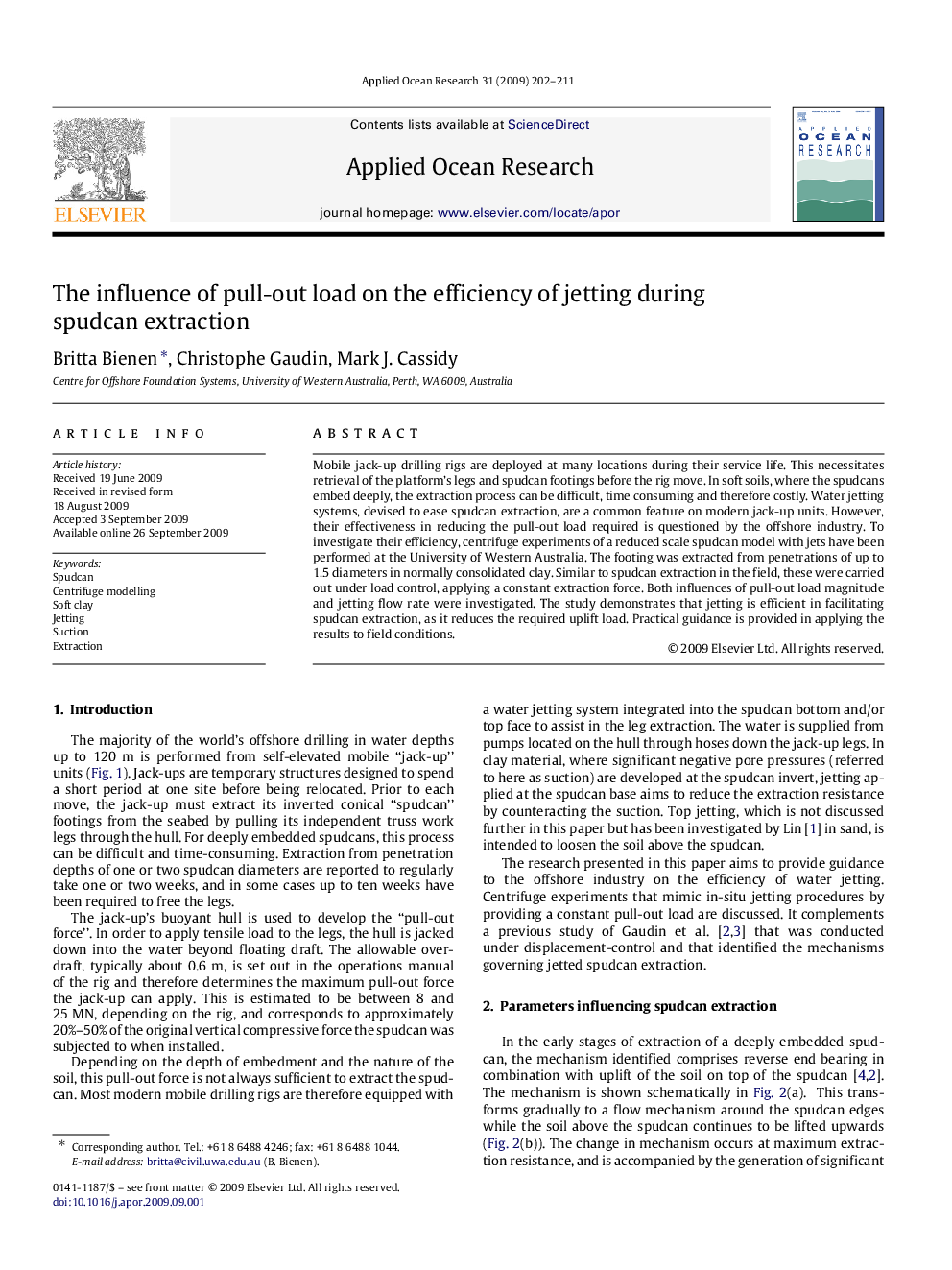| Article ID | Journal | Published Year | Pages | File Type |
|---|---|---|---|---|
| 1720230 | Applied Ocean Research | 2009 | 10 Pages |
Mobile jack-up drilling rigs are deployed at many locations during their service life. This necessitates retrieval of the platform’s legs and spudcan footings before the rig move. In soft soils, where the spudcans embed deeply, the extraction process can be difficult, time consuming and therefore costly. Water jetting systems, devised to ease spudcan extraction, are a common feature on modern jack-up units. However, their effectiveness in reducing the pull-out load required is questioned by the offshore industry. To investigate their efficiency, centrifuge experiments of a reduced scale spudcan model with jets have been performed at the University of Western Australia. The footing was extracted from penetrations of up to 1.5 diameters in normally consolidated clay. Similar to spudcan extraction in the field, these were carried out under load control, applying a constant extraction force. Both influences of pull-out load magnitude and jetting flow rate were investigated. The study demonstrates that jetting is efficient in facilitating spudcan extraction, as it reduces the required uplift load. Practical guidance is provided in applying the results to field conditions.
